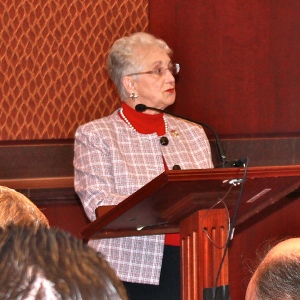 With the Higher Education Act (HEA) set to expire at the end of the year — in turn, setting up a reauthorization hearing before the 113th Congress –the House Committee on Education and the Workforce’s Subcommittee on Higher Education and Workforce Training held a hearing in Washington on Tuesday featuring numerous panelists discussing the significance of federal student aid programs.
With the Higher Education Act (HEA) set to expire at the end of the year — in turn, setting up a reauthorization hearing before the 113th Congress –the House Committee on Education and the Workforce’s Subcommittee on Higher Education and Workforce Training held a hearing in Washington on Tuesday featuring numerous panelists discussing the significance of federal student aid programs.
As college costs continue to increase, Subcommittee Chairwoman Virginia Foxx (R-N.C.) said that new programs, which entail different eligibility requirements and funding streams for federal financial student aid, could become components of the HEA, pending it is reauthorized for a tenth time since being enacted in 1965.
In her opening remarks, Rep. Foxx noted that there is a possibility that financial aid applications could be simplified by linking applications with student IRS information. Additionally, she believes that other financial aid models — including campus-based federal aid and student aid tied to student income — are likely to become incorporated in a reauthorized HEA package. Moving student loan interest rates towards “market-based formulas,” she said, could also create more stability for taxpayers and borrowers alike.
Rep. Suzanne Bonamici (D-Ore) said that, over the last few years, the “purchasing power” of Pell grants — which she considered a “lifeline for more than 9 million students” — has eroded, with most of the grants only covering about one-third of students’ total college costs. She noted that last year, student loan debt topped $1 trillion in the United States, officially eclipsing the nation’s total credit card debt. With subsidized Stafford loans interest rates on course to double, she believes that many college students may be saddled with even greater debts, or even be forced out of college altogether.
Terry W. Hartle, senior vice president of the American Council on Education’s Division of Government and Public Affairs, said the original intent of the Higher Education Act was to provide grant access to low-income students and low-interest loans for middle class young adults. Since 1965, however, the demographics of college students have changed considerably, he stated. Fifty years ago, America’s colleges and universities were filled with an estimated 8 million people, a majority of whom were “traditional students” — ages 18-to-22, with full-time coursework, living on campus, and largely dependent on parental assistance. Now, Hartle said that the nation’s universities and colleges — public and private, four-year and two-year — are home to about 21 million students, with only 15 percent of current pupils fitting the “traditional student” mold that was commonplace when the HEA initially took effect.
“In 1965, there were about 200,000 institutes of higher education,” he said. The number now, Hartle continued, is closer to about 600,000.
“The strength of federal student aid is that it goes directly to students,” he said. “[It] helped insulate many students from huge intuition increases.”
However, Hartle said that state funding — which he considered the long-term, bulk provider for public colleges — has steadily decreased over the last four decades.
“The federal and state roles have never been fully realized, and we rely primarily on creditors as gatekeepers,” he added.
Simplification of the federal financial college assistance process, he said, has been a “holy grail” sought by many, especially since he believes that having multiple repayment options is a more expensive and complicated alternative. He said that one possible solution could be income-contingent repayment models, which would place students in universal, income-based withholding plans to pay off student loans. However, while the idea would remedy defaults and relieve some college graduates of future earning burdens, he also believes that such a system could give students an incentive to over-borrow loans.
“[It would] fix two problems,” he stated. “And make one problem worse.”
Hartle cites other problems with the current HEA financial aid structure. As policy goals have shifted from providing access to students to completion and retention, he said major difficulties arise when the federal government attempts to tally up graduates. This inability to track student outcomes accurately — among other problems, he noted that transfer students are routinely counted as “dropouts” in institutional measurements — frequently creates “inadvertent roadblocks to education.”
Regarding systemic problems involving financial aid fraud, Hartle said that institutional authority to deny students’ rights to borrow is “very limited.” However, he is in favor of allowing colleges some “discretionary authority” to deny eligibility for certain categories of students, including those in programs that are unlikely to result in high earnings or students that require remediation.
Patricia McGuire, president of Trinity Washington University, however, believes that broader criteria than one’s projected starting salary upon graduation should be considered in the financial aid process.
A large number of the women at her college, she said, are minority students, with many coming from homes with sub-$25,000 incomes. “These students need a great deal of support to achieve their dreams,” McGuire said. With increases in Hispanic, Asian and African-American enrollment projected to outpace whites, she believes that continued access for “talented, low-income students” is a major concern for the nation’s colleges and universities.
“The system is hardly broken, as some critics claim,” she continued. She believes that there is too great an emphasis on graduation rates, which in turn, may goad some institutions into creating new entrance barriers. Nor is she a proponent of emphasizing a need for students to enroll in “incentivized majors,” such as engineering and sciences. What is needed, she said, are updated policies which support non-traditional learners, who complete coursework in ways that are different from traditional students.
“Most of the jobs that are begging [for more workers] right now require post-secondary education,” McGuire said.
Streamlining the financial aid process for students should be a top priority, she added.
“Simplifying the form itself for application would make a great deal of sense,” she believes. “Reducing complexity will achieve great results.”
For the United States to remain innovative in a “knowledge economy,” she believes that college access must remain open to wider groups of potential students.
“To be able to educate both policymakers and others how we know the success of our students and how we represent that to the public is something we should share,” McGuire continued.
“Our students go in debt to be in college,” she concluded. “[And] money is the number one reason why students [dropout.]”
Photo courtesy of Rep. Virginia Foxx































